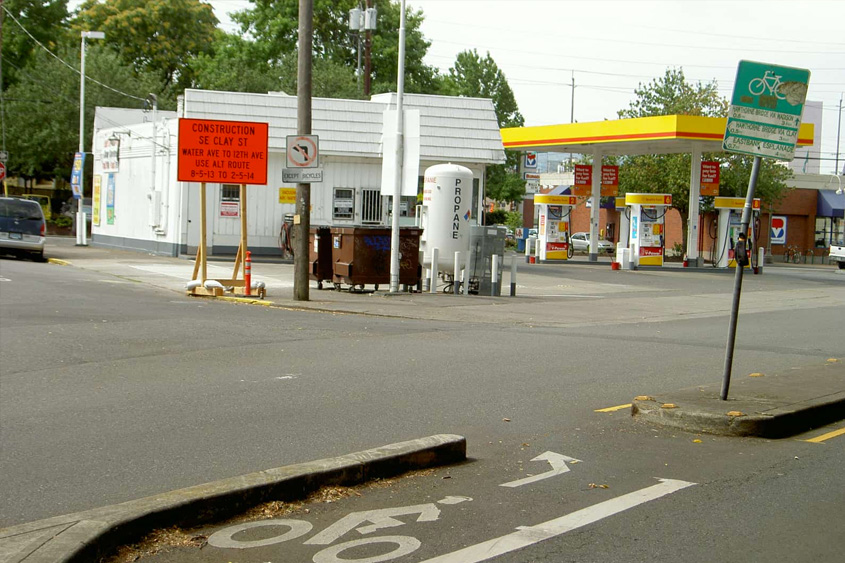By Kurt Nordback
Portland, Oregon is rightly famous for beer, tattooed hipsters, and
bicycling. Among large metropolitan areas, Portland has by far the
highest rate of people biking to work (6.1%), almost double that of the
next contender. While this is well below Boulder’s bike-to-work rate
(10.6%), small cities with large universities, like Boulder, Davis, and
Ann Arbor, seem to have a built-in advantage in bike-commuting rates.
Portland’s statistics are impressive given its lack of a dominant
university. And biking rates vary significantly across the city, with
several neighborhoods hitting rates in the 20% range.
Portland’s inherent strength is its largely traditional urban design
that is characterized by a rectangular street grid, small blocks, narrow
streets that keep traffic calm, and frequent commercial corridors, so
that folks in most parts of the city have a coffee shop or grocery store
within a few minutes’ bike ride. The city has taken advantage of this
heritage to make up for slim transportation budgets. Unlike well-to-do
Boulder, Portland hasn’t gone for expensive bike infrastructure like
off-street paths and underpasses. Instead, it’s used the extensive
street grid to provide calm and pleasant neighborhood greenways, where
bikes are welcomed but cars are discouraged by frequent traffic humps,
diverters, and other calming devices. Many of the back streets that
haven’t gotten this treatment are also delightful for biking, as cars
are slow-moving and infrequent.
Boulder often seems to want to provide for bikes, but only in ways that
won’t inconvenience cars. It’s undertaken expensive street-widening
projects to add bike lanes (on Table Mesa Drive, for instance),
resulting in a vast and forbidding expanse of pavement. Portland has not
been afraid to face the fact that a seeming win-win like street widening
can lead to higher traffic speeds and, in some cases, can actually
worsen conditions for bikes and pedestrians. Instead, on streets like SE
Foster Road it’s reconfiguring the existing street width, reallocating
space from cars to bikes in a “road diet”. This approach is cheap,
quick, and preserves the existing feel and character of the street. But
it takes the political will to be honest about tradeoffs in urban
design.
Portland has also been successful in getting a lot of the little things
that help cyclists right. Narrow median openings that allow turns for
bikes but not cars; traffic signal phases that are just for bikes; short
signal cycles that particularly benefit pedestrians and bikes; a bike
lane shifted to the left side of a one-way street to avoid stopped buses
— these are all simple, cheap measures that make life easier for folks
on a bike.
One area where Portland has largely failed is in welcoming cyclists onto
the arterial commercial streets where people need to go to shop and get
services. The neighborhood greenways and back streets are wonderful, but
the lack of accommodation on the main streets makes it hard to get to
many stores, or even to know that they’re there. Boulder’s much-lauded
path system has the same failing: it’s delightful for a little morning
recreation, but not always suitable for practical purposes.
So here are two lessons we can learn from the example of Portland:
1. A traditional urban street grid is a great frame on which to build a
delightful cycling network. Boulder needs to preserve the historic urban
street design where it exists, and create it in the outlying, suburban
parts of the city where it doesn’t exist, by breaking up large blocks,
narrowing streets, and diversifying monocultural expanses of houses or
other single uses.
2. Making a city into a great place for biking and walking doesn’t have
to be expensive, if the basic elements are there. Cheap and simple
approaches can be very successful, but we need to find the political will to make them work.

